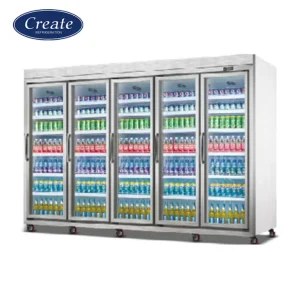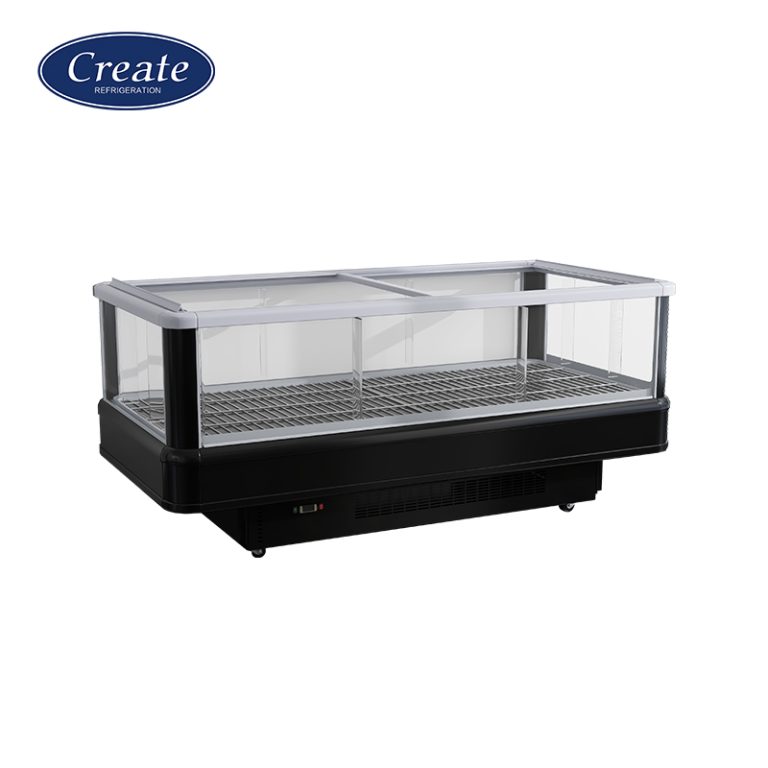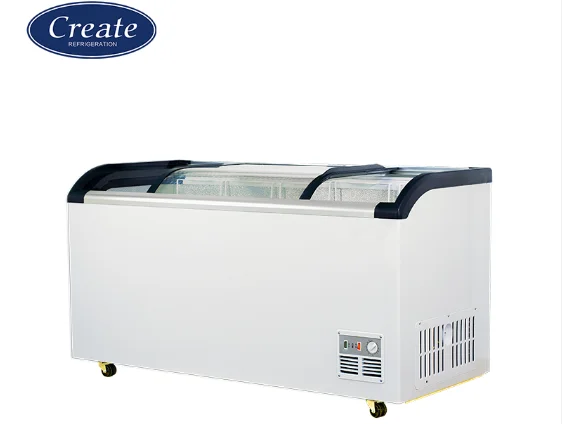Proper defrosting of commercial display freezers is critical for maintaining their performance and ensuring the quality of stored products. When ice builds up inside the freezer, it forces the unit to work harder to maintain the desired temperature. This added strain can reduce the lifespan of the appliance and increase energy consumption, contributing to higher operational costs. Regular defrosting minimizes this risk, extending the life of your equipment and maintaining a consistent temperature, which is essential for food safety.
Moreover, keeping your commercial display freezer free of excess frost plays a huge role in enhancing efficiency. When frost accumulation is kept in check, air circulation improves, allowing the freezer to operate at optimal levels without overworking. This balance ensures that the products displayed maintain their quality and freshness, ultimately leading to customer satisfaction.
What Happens During a Defrost Cycle?
During a defrost cycle, the buildup of frost or ice is melted and removed from the evaporator coils, which are essential for the heat exchange process in the freezer. This process typically involves the compressor shutting down, allowing the temperature inside the unit to rise slightly, leading to a thawing effect. Water created from the melted ice is directed to a drainage system or collected in a pan where it can evaporate.
Understanding this process is key for anyone managing a commercial display freezer. If the defrost cycle is not performed effectively, melting ice can lead to water pooling in unwanted areas, which can cause leakage and potential damage to the unit. Regular maintenance during the defrost cycle can prevent such issues and ensure that your commercial display freezer operates without interruption.
How Does Frost Build-Up Affect Your Freezer’s Performance?
Frost build-up can significantly impair a commercial display freezer’s efficiency. When ice forms on evaporator coils, it acts as an insulator, preventing efficient heat exchange. As a result, the compressor has to work overtime to maintain the desired internal temperature, leading to increased energy costs and wear and tear on the machine.
Additionally, excessive frost can obstruct air flow, which hampers the even distribution of cold air. This uneven temperature can directly affect the quality of stored perishable items, risking spoilage. Regular defrosting will prevent frost accumulation and hence keep your commercial display freezer running smoothly.
What Are the Methods for Defrosting a Commercial Display Freezer?
When it comes to defrosting a commercial display freezer, there are several effective methods to choose from. The choice of method depends on your specific needs, available resources, and the type of freezer you are operating.
Manual vs. Automatic Defrost Systems
Manual defrosting requires users to turn off the freezer, allowing ice to melt naturally or using hot water to facilitate the process. While this method can be time-consuming, it is effective and requires no additional equipment. However, it results in significant downtime, which can disrupt your operations.
In contrast, automatic defrost systems are specifically engineered for convenience and efficiency. These systems automatically defrost the unit at pre-set intervals, greatly reducing downtime. Although they may require an initial investment, their efficiency and reliability make them a valuable choice for busy commercial settings, making sure that your commercial display freezer operates efficiently.
What is Reverse Cycle Defrost?
Reverse cycle defrost is an innovative method employed in some advanced commercial display freezers. This technology takes advantage of the heat generated during the refrigeration process. By reversing the cooling cycle, the freezer temporarily switches to heating mode, allowing ice to melt without turning off the unit entirely.
This method minimizes downtime, as the freezer continues to operate while enhancing defrosting efficiency. With reverse cycle defrosting, you ensure minimal disruption to your daily operations, allowing you to focus on serving customers rather than managing equipment.
Incorporating these defrost methods effectively is essential for any business relying on a commercial display freezer. By choosing innovative solutions like those found at Create Refrigeration, you can further enhance efficiency in your operations. Additionally, for businesses looking for tailored solutions, considering OEM products can ensure that your specific needs are met.
A well-maintained defrosting strategy enables you to keep your commercial display freezer in optimal condition, ensuring reliable performance and ultimately contributing to customer satisfaction. By comparing methods and selecting the best practices for your operation, you can significantly decrease equipment downtime.
Using the right products like the 5 Doors Glass Door Beverage Fridge ensures that your display needs are met while also achieving a high level of efficiency in defrosting practices.
In conclusion, minimizing downtime through proper defrosting is not just an operational necessity but a strategic approach to maintaining your commercial display freezer’s longevity and performance. By regularly incorporating effective defrost methods and using innovative technologies and products, you can enhance your operational efficiency while ensuring optimal product quality for your customers.
What are Tips for Minimizing Downtime During Defrosting?
Planning Your Defrost Schedule
To minimize downtime during defrosting, it is essential to establish a well-thought-out defrost schedule tailored to your operation’s specific needs. Start by assessing peak business hours and select off-peak times for defrosting, ensuring that customer service remains uninterrupted. Be sure to communicate this schedule to your staff so they are prepared and can manage inventory accordingly.
Integrating a maintenance log that tracks defrost cycles can also aid in planning. This log will help identify patterns of frost buildup and determine when defrosting will be most beneficial, keeping the commercial display freezer operating at peak efficiency. By planning strategically, you can balance operational needs while ensuring that your commercial display freezer functions optimally.
Ensuring Quick Resumption of Normal Operations
To guarantee a swift return to normal operations post-defrosting, it is crucial to have effective systems in place. Have a plan for the quick repositioning of products once the defrost cycle is complete. This may involve having designated staff members whose responsibility is to manage the process, thereby reducing the impact on business operations.
Utilizing temperature monitoring systems can help you stay aware of the freezer’s state during defrosting. This proactive approach allows you to anticipate when the unit will be ready for operation. Additionally, ensuring that proper drainage systems are in place will prevent water accumulation and allow for a more efficient resumption of normal functions once defrosting is complete.
How Can You Optimize the Length of the Defrost Cycle?
Adjusting Preset Time Cycles
One method to optimize the length of the defrost cycle is by adjusting the preset time cycles to match the specific conditions of your environment. If your commercial display freezer is located in a high humidity area, for instance, it may require more frequent defrosting intervals to manage icing effectively.
Engaging with the equipment’s manual or consulting with manufacturers like Create Refrigeration can assist you in fine-tuning these settings to improve operational efficiency. Periodic reviews of the defrost cycle and adjustments as necessary can help maximize performance while minimizing downtime.
Monitoring and Maintaining Defrost Systems
Vigilant monitoring and maintenance of defrost systems are equally critical for optimizing cycle length. Regularly inspect components such as heaters and timers to ensure they are functioning correctly. A malfunctioning part might lead to extended defrost cycles, causing inconvenience and resource wastage.
Moreover, consider using advanced technology that enables real-time monitoring of defrost cycles. This will provide you with data-driven insights, allowing you to make informed decisions concerning when and how often to initiate defrosting. Through a robust monitoring approach, you can strike a balance between maintaining optimal temperatures and reducing unnecessary downtime.
Leveraging OEM Solutions
Customization Options with OEM Products
Leveraging OEM solutions can greatly enhance the efficiency of your commercial display freezer’s defrosting practices. Customization options offered by OEM manufacturers like Create Refrigeration can be tailored to fit the unique characteristics of your business environment. This customization helps ensure that the systems integrate seamlessly with existing equipment while meeting specific operational needs.
For instance, you might consider OEM products that allow programmable settings for various defrost cycles depending on seasonal demands or changes in stock volume. Such tailored solutions not only improve efficacy but also contribute to significant cost savings over time, as equipment operates efficiently without unnecessary strain.
Case Examples: Effective Implementation in Existing Setups
Examining case studies of businesses that have successfully implemented OEM solutions provides valuable insights into effective practices. For example, a bakery with high humidity levels significantly improved its defrosting efficiency by integrating an OEM automatic defrosting system specifically designed for their environmental conditions.
Such implementations typically showcase enhanced performance, leading to reduced downtime and improved product preservation. These case examples underline the importance of adopting OEM solutions that cater to your existing setups, which can lead to substantial operational improvements.
By leveraging innovative practices and staying updated on advancements in commercial freezer technology, you can effectively manage defrosting procedures. Regularly reassess your strategies, remain adaptable to changing needs, and do not hesitate to invest in enhancements that will minimize downtime and optimize performance.
In conclusion, minimizing downtime with proper defrosting of your commercial display freezer involves careful planning and execution. By establishing a strategic defrosting schedule, actively monitoring and maintaining systems, and leveraging OEM solutions, you can ensure that your freezer operates at peak performance throughout the year. Your attention to detail in these areas directly translates to operational efficiency and customer satisfaction, making it a critical component of your business strategy.























